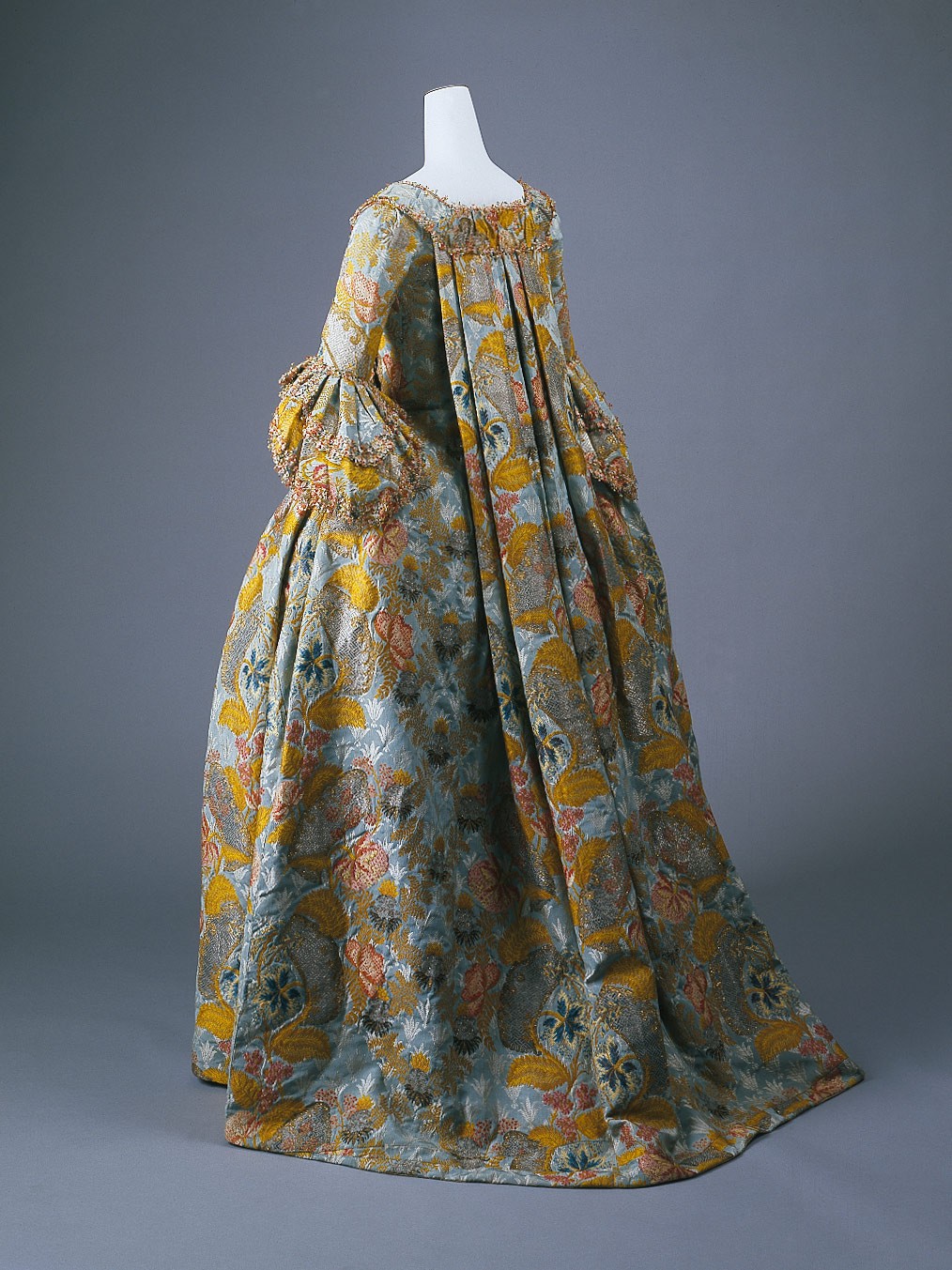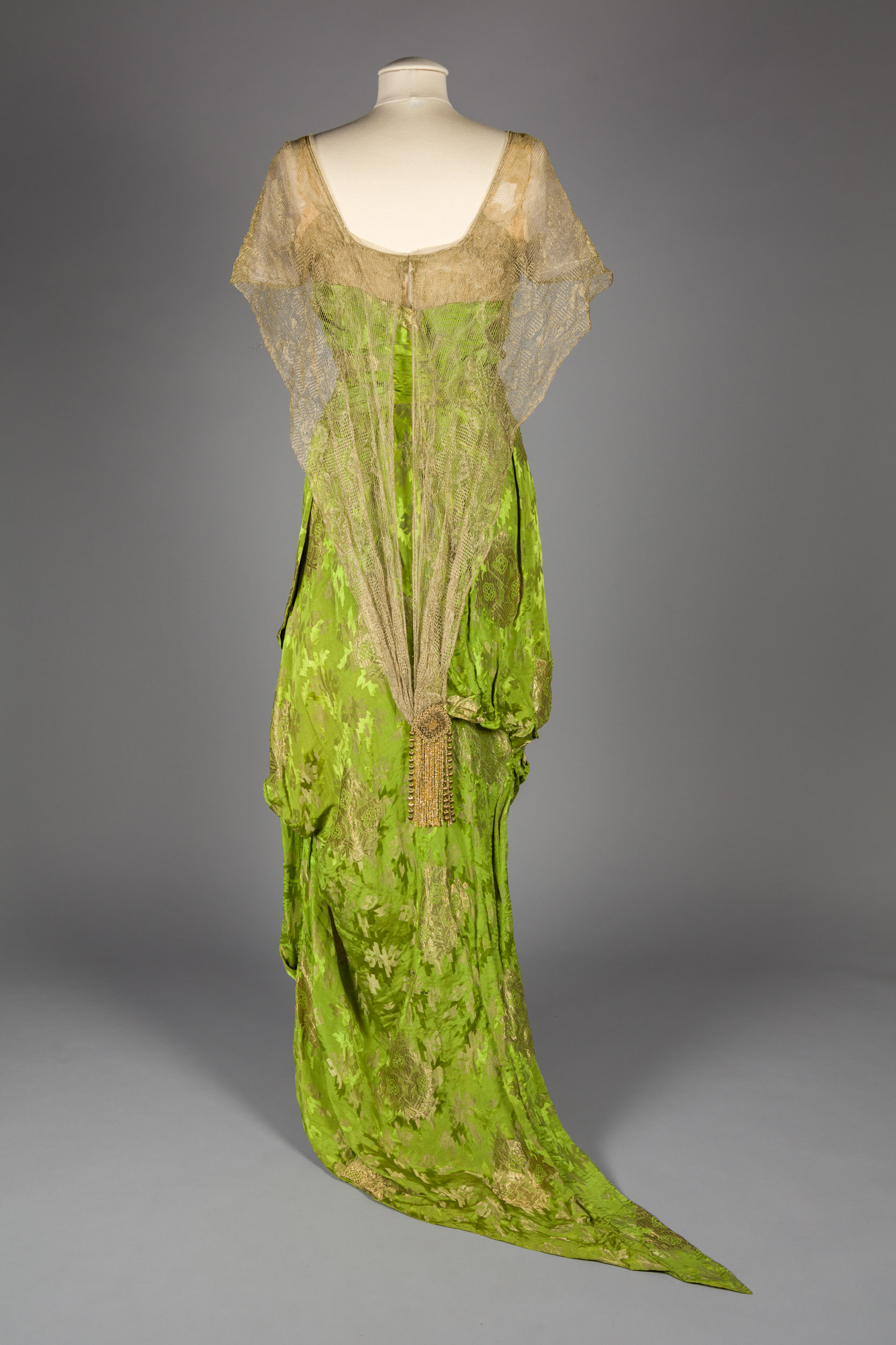Collecting Cauet
 |
|
Cauët Sœurs label on bodice’s petersham band.
Chiffon dress, Cauët Sœurs, 1913, Gift of Mrs. Andrew Robeson, 1948.58.5, Maryland Historical Society.
|
During the Belle Époque, a period conventionally dated from 1900 to 1914, various Parisian couturiers established influential design houses that continue to elicit exclamations of awe when one views their dresses’ intricate embroidery, beading, and construction details.[i] Within the Maryland Historical Society’s Fashion Archives, various Parisian designers of this period are represented, such as Jacques Doucet (1853-1929), Jeanne Lanvin (1867-1946), and Jeanne Paquin (1869-1936), some of which can be further explored in previous fashion blog posts. One particular design house, Cauët Sœurs (Cauët Sisters in English) is uniquely well documented within our collection.
| Various calling cards of Parisian couturiers gathered together in the Parisian magazine Les Modes: Revue Mensuelle Illustrée des Arts Décoratifs Appliqués à la Femme.
Note that both Paquin and Cauët are displayed near each other. |
During her and her husband’s 1913 European honeymoon, Laura Patterson Swan Robeson purchased multiple Cauët Sœurs gowns from the Rue de la Paix in Paris, a boulevard renowned for the numerous design houses stationed there. In 1948, Mrs. Robeson donated eight of these dresses to the Maryland Historical Society, offering us a unique opportunity to view the designs of a largely unknown couturier when compared to its renowned contemporary, Callot Sœurs.
| Laura Patterson Swan, 1959.118.60, Gift of Mrs. Andrew Robeson, Maryland Historical Society. |
Cauët Sœurs was lauded by fashion magazines of the period for its incorporation of historic clothing trends into new designs that followed modern tastes. One particular article, “Petite Chronique des Modes,” published in the Parisian journal Les Modes : Revue Mensuelle Illustrée des Arts Décoratifs Appliqués à la Femme, places the designs of Cauët Sœurs into a larger fashion context. According to the article, the design house’s incorporation of free-flowing fabric connected to the back of the dress was reminiscent of the 18th century sacque-back. The writer of the article exclaimed that such drapery “permitted us the beautiful use of lace and embroidered net.”[ii]
 |
 |
| Silk Dress, 1760, French, Irene Lewisohn Bequest, C.I. 62.28a,b, Metropolitan Museum of Art | Silk Dress, 1913, Cauët Sœurs, Gift of Mrs. Andrew Robeson, 1948.58.2, Maryland Historical Society |
The article’s author continues to explain that this specific detail reflected the reprisal of Alexandre Dumas’ play, la Dame aux Camélias. Dumas’ piece of literature, written in 1848, takes place in mid-18th century France, meaning actors and actresses wore 18th-century inspired costumes. One of Laura’s dresses features a length of gold, metallic lace that provides a visual for understanding the Parisian couturier’s modern interpretation of this 18th century dress detail.
While perusing through Parisian fashion magazines that mentioned Cauët, one particular illustration depicting a Cauët evening gown stood out – it is almost identical to the green and gold silk brocade dress that Laura Swan herself wore!
 |
 |
| Silk Dress, 1913, Cauët Sœurs,Gift of Mrs. Andrew Robeson, 1948.58.2, Maryland Historical Society | Les Modes: Revue Mensuelle Illustrée des Arts Décoratifs Appliqués à la Femme. [Décembre 1913, Bibliothèque Nationale de France]. |
| Tulle Dress, 1916, Gift of Mrs. Andrew Robeson, 1948.58.6, Maryland Historical Society |
 |
[i] Hill chapter 3, Edwardianism: Fashions of la Belle Époque, 77.
[ii] Les Modes : Revue Mensuelle Illustrée des Arts Décoratifs Appliqués à la Femme, “Petite Chronique des Modes,” (Paris, 1912), 153.
Read More:
- Jeanne Lanvin: http://blog.mdhs.org/costumes/jeanne-lanvins-robe-de-style-an-alternative-to-all-that-jazz-fashions-of-the-1920sDouc
Sources:
1) Hill, Delis. American Menswear: From the Civil War to the Twenty-First Century. Lubbock: Texas Tech University Press, 2011.



